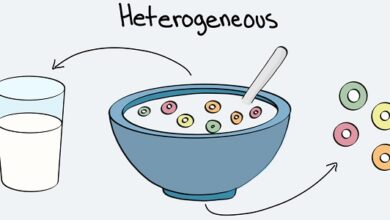What is Chronic Pain main types and treatment
Chronic Pain
Chronic pain is one that persists for more than 3 months or that remains after 1 month of resolution of an injury, and generally indicates that there are dysfunctions in the nervous system or in the nervous fibers of the affected limb, appearing in most cases in association with a chronic illness, such as rheumatoid arthritis, osteoarthritis of the spine or knees, fibromyalgia or cancer, for example.
Pain is an unpleasant sensation located in some part of the body, which is usually caused by tissue damage, such as a cut, burn or inflammation, or by nervous system stimuli, and can also be influenced by emotional issues, since situations such as anxiety and depression are important for the intensity and duration of pain.
Treatment for chronic pain may vary according to the type and intensity of pain, and the use of medication, infiltration or injections, physical therapy and, in the most severe cases, surgery may be recommended.
Main types of chronic pain
Pain can arise anywhere in the body, and can have different causes, according to its type. Determining the type of pain is very important for the doctor, as it will determine the best type of treatment for each person. To identify the type, the doctor does an analysis of the symptoms, along with performing a physical examination.
The main types of chronic pain and their possible causes are:
1. Nociceptive or somatic pain
It is the pain that arises due to an injury or inflammation of the skin tissues, which is detected by the sensors of the nervous system as a threat, and persists as long as the cause is not resolved.
Possible causes : Cut; Burn; Slam; Fracture; Sprain; Tendinitis; Infection; Muscle contractures.
2. Neuropathic pain
Pain that happens due to dysfunction of the nervous system, whether in the brain, spinal cord or peripheral nerves. It is common for it to appear in the form of burning, needles or tingling. Here’s how to identify neuropathic pain .
Possible causes : Diabetic neuropathy; Carpal tunnel syndrome; Trigeminal neuralgia; Narrowing of the spinal canal; After stroke; Neuropathies of genetic, infectious or toxic substance causes.
3. Mixed or nonspecific pain
It is pain that is caused by both nociceptive and neuropathic pain components, or by unknown causes.
Possible causes : Headache; disc hernia; Cancer; Vasculitis; Osteoarthritis that can reach different places such as knees, spine or hips, for example.
How the treatment is done
The treatment of chronic pain is complex and involves specific care indicated by the doctor, in addition to the use of analgesics and anti-inflammatories. Thus, whenever there is persistent pain, it is necessary to seek medical attention, which through evaluation will determine the type of pain and what may be causing it.
Treatment for chronic pain is individualized, oriented according to the needs of each person, and can be done by the general practitioner or, in more complex cases, by pain specialists. The main forms of treatment include:
1. Use of medication
Medicines for chronic pain are indicated according to the intensity of the pain, and may be recommended:
- Mild pain (grade 1) : analgesics (dipyrone or paracetamol) and/or anti-inflammatories (ibuprofen or ketoprofen);
- Moderate pain (grade 2) : analgesics or anti-inflammatories + weak opioids (tramadol or codeine);
- Severe pain (grade 3) : analgesics or anti-inflammatories + strong opioids (morphine, methadone, oxycodone or transdermal dentanil).
In some cases, the doctor may indicate the use of some auxiliary drugs depending on the type of chronic pain, regardless of the degree of intensity, such as antiepileptics, antidepressants and muscle relaxants, for example.
2. Injections and infiltrations
In some cases it may be necessary to perform infiltration or injection at the site of pain, especially in some cases of neuropathic or mixed pain. Injection or infiltration is done by applying medications directly to the nerve endings, such as anesthetics, corticoids or neuromuscular blockers with botox, for example.
This type of treatment must be carried out by qualified physicians to reduce the sensation of pain, inflammation and muscle spasms, with effects that last for weeks to months.
3. Physiotherapy
Physiotherapy may be indicated for some types of pain, especially when movement is limited. Thus, in physiotherapy sessions, appropriate exercises are performed that help not only to promote pain relief but also to prevent stiffening of the joint and muscle flaccidity.
Furthermore, in cases of nociceptive or somatic pain, for example, the application of cold-heat can also help relieve pain.
4. Alternative therapies
Alternative therapies are excellent ways to improve body perception, relieving tension and nervous stimuli, which have a great influence on pain. Some options are:
- Cognitive behavioral therapy , an approach to psychotherapy, which can be very useful to help treat pain in general, mainly by treating situations of depression and anxiety;
- Massage , an excellent form of treatment, mainly for muscle pain associated with contractures and tension;
- Acupuncture and needling is a proven great way to relieve myofascial-type pain associated with contractures, osteoarthritis and other chronic muscle pain;
- Physical activity , practiced regularly, at least 3 times a week, is very useful for relieving different types of chronic pain;
- Relaxation techniques decrease contractions and improve self-awareness of the body.
As the pain improves, the doctor may remove some forms of treatment so that less and less medicine is used. Meanwhile, alternative therapies can be maintained, and are great ways to prevent new pain paintings.
5. Surgery
There are cases of chronic pain that are difficult to treat, as they do not improve with medicine or alternative treatments. Thus, some surgical procedures can be performed, mainly by neurosurgeons or orthopedists, who can correct bone deformities or block nerves that are responsible for pain.
Thus, surgery can be performed with the aim of correcting structural and anatomical alterations of the spine, such as removal of herniated discs, correction of the narrow channel through which nerves pass or correction of alterations in the vertebrae, as this way it is possible to reduce the overload on the nerves. and ease the pain.
In addition, surgery can be performed to implant an electrode in the spinal cord, called a neurostimulator, which is capable of making stimulations that block the reception of pain stimuli, and this procedure is indicated mainly in the treatment of chronic pain in the limbs or trunk. .


